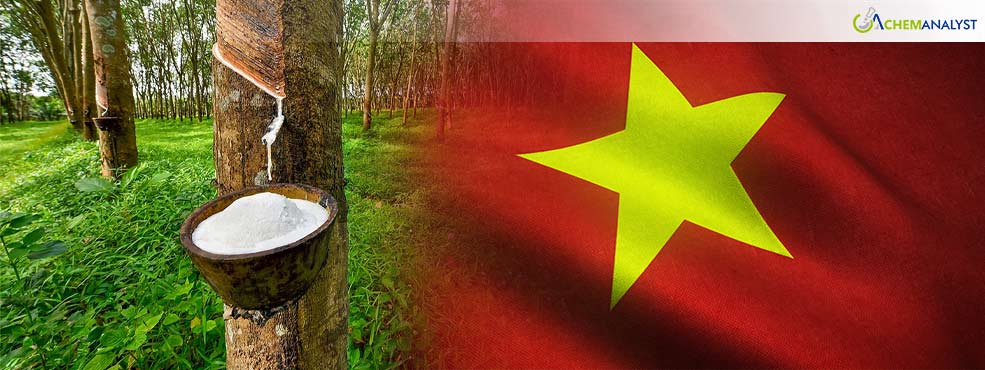Vietnam's Rubber Boom: A Green Tide Lifting the Chemical Industry
- 19-Feb-2025 9:00 PM
- Journalist: Patricia Jose Perez
Vietnam's rubber industry is surging, with the Vietnam Rubber Association (VRA) projecting a remarkable 10% annual growth in exports, reaching a staggering $11 billion by 2025. This surge has significant implications for the global chemical industry, where natural rubber serves as a vital raw material for a diverse range of products, from tires and adhesives to coatings and industrial components.
The growth of Vietnam's rubber sector is fuelled by a confluence of factors, including rising global rubber prices driven by supply constraints and increased demand across various industries. This price surge translates to higher profits for Vietnamese rubber producers, fostering optimism and further investment in the sector.
In January 2025 alone, Vietnam exported 180,000 tonnes of rubber, generating $341 million in revenue. While export volume saw a slight year-on-year decline, the value of exports surged by 14.6%, highlighting the impact of escalating rubber prices. The average export price in January reached $1,892 per tonne, a substantial 34% increase compared to the same period last year.
This upward price trend is a boon for Vietnamese rubber producers, but it also presents challenges for chemical companies reliant on rubber as a key feedstock. Increased raw material costs could impact production expenses and profitability. However, the robust growth of Vietnam's rubber industry could also stimulate innovation and expansion, potentially leading to a more stable and secure supply of high-quality rubber at competitive prices.
For chemical industry players, this presents a strategic imperative to closely monitor and adapt to the evolving dynamics of the rubber market. Companies may need to re-evaluate sourcing strategies, explore alternative materials, or optimize production processes to mitigate the impact of rising rubber prices.
Furthermore, the increasing prominence of natural rubber aligns with the growing emphasis on sustainability within the chemical industry. Natural rubber, a renewable resource, offers a greener alternative to synthetic rubber derived from petrochemicals. This presents an opportunity for chemical companies to leverage Vietnam's expanding rubber production to enhance their sustainability profiles and meet the rising demand for eco-friendly products.
Vietnam's rubber boom is not merely an economic phenomenon; it represents a shift in the global landscape of raw material sourcing and pricing. Chemical companies must proactively adapt to these changes, embracing innovation and sustainable practices to maintain competitiveness and capitalize on emerging opportunities.
As the world focuses on COP30 in Brazil later this year, the spotlight on sustainable practices and green initiatives will intensify. The chemical industry's response to these trends, including its approach to sourcing and utilizing natural rubber, will play a crucial role in shaping a more sustainable future for the sector and the planet.
The growth of Vietnam's rubber industry serves as a compelling case study for chemical industry leaders, highlighting the interconnectedness of global markets, the importance of sustainable sourcing, and the need for strategic agility in navigating a dynamic and evolving landscape.



